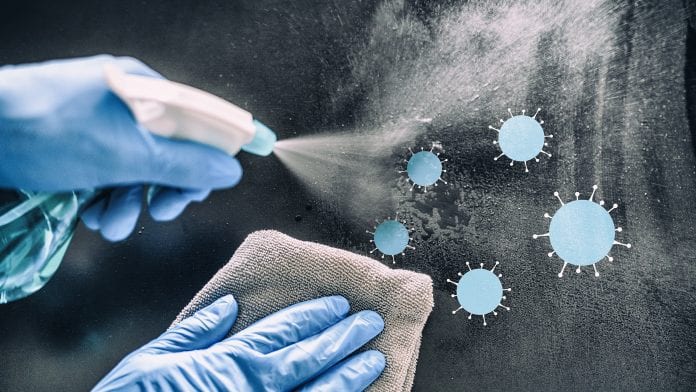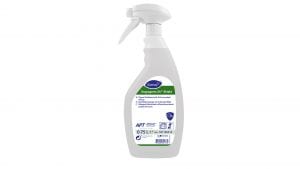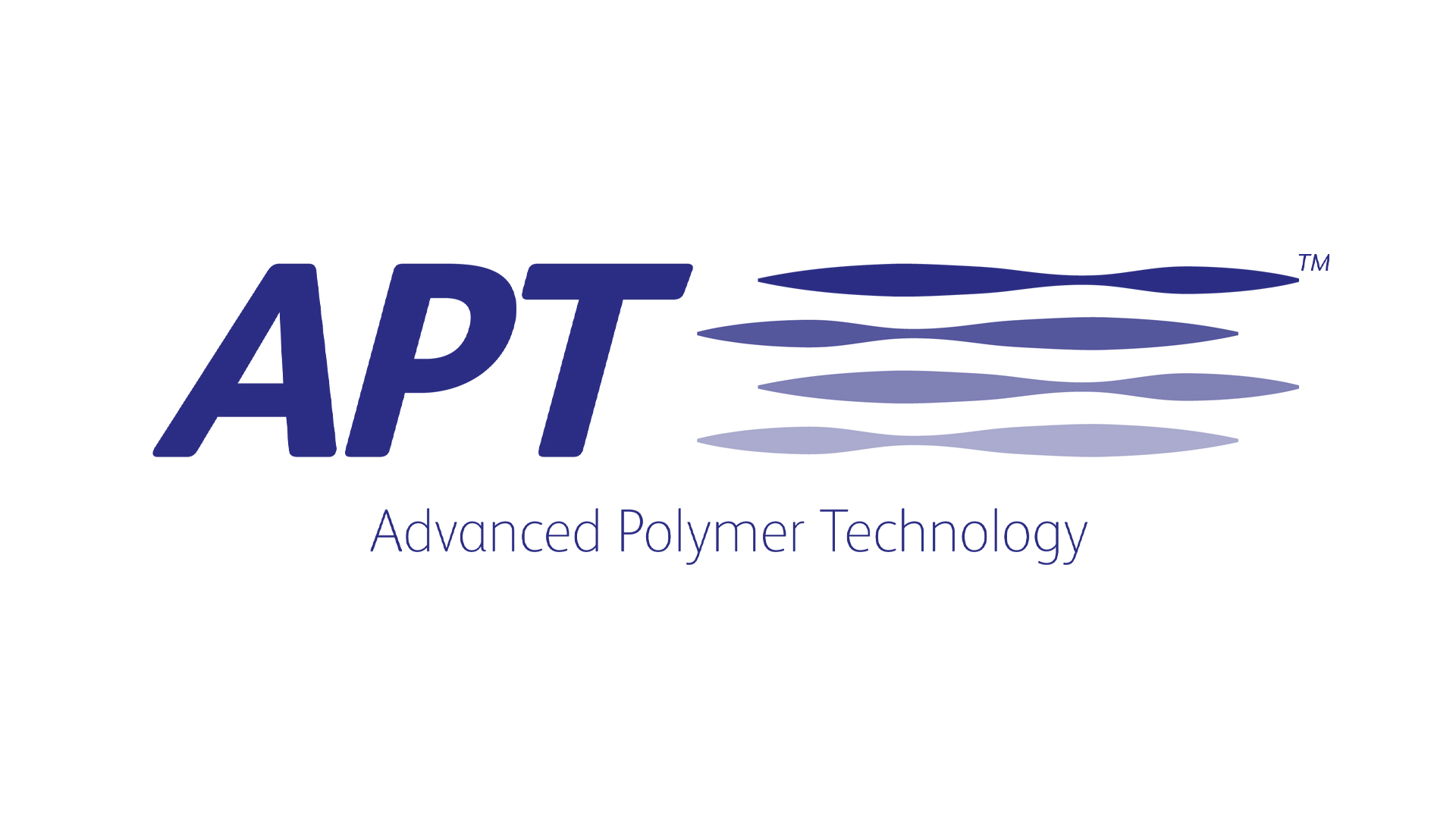
Diversey’s Degragerm 24 Shield offers 24-hour disinfection protection from microbial contamination of surfaces.
To achieve optimal levels of hygiene, environmental surfaces and equipment in public facilities need to be free of soil and pathogenic microorganisms. A new generation of disinfectants, purporting to offer some residual antimicrobial benefit between manual cleaning and disinfection of surfaces, is being offered to the market.
This white paper discusses the potential benefits and some important limitations to take into account when considering this technology, as well as Diversey’s newest offering in this category, Degragerm 24™ Shield.
Background
Hard non-porous surfaces in public facilities (including hospitals, nursing homes, hotels, schools, offices, retail stores, and restaurants) may play a role in the transmission of pathogenic microorganisms, causing infections in people. Environmental surfaces that receive the most hand contact, such as door handles, elevator buttons, light switches, counters, and touchscreens, may be at higher risk of helping to transfer microorganisms, thereby leading to infection.
A range of interventions may be used to break the chain of infection: so-called source control interventions (wearing masks, staying home if sick, respiratory hygiene) and remediation interventions (hand hygiene, surface cleaning and disinfection, laundering of fabrics) are designed to remove pathogenic organisms from the environment or other surfaces where a risk of a subsequent transfer can lead to infection in people.
Cleaning and disinfection of surfaces
Disinfectants intended for hard non-porous surfaces are an important part of providing a hygienic environment in public facilities. The cleaning process removes soils and microorganisms, and the disinfection process kills or inactivates remaining microorganisms.
However, while disinfectants are highly effective at addressing risks associated with soils and microorganisms, they are only effective when used, as they provide immediate efficacy but no ongoing residual efficacy on surfaces.
Once the surface cleaning and disinfection are completed, subsequent contamination of the surface creates a hygiene risk for people coming into contact with the surface. To address this limitation, a range of chemical products have been proposed which are applied to the surface on a regular basis and provide some continued efficacy between cleaning and disinfection events. These products are referred to as having residual efficacy. While the level of residual efficacy is expected to be less than the immediate efficacy achieved when disinfecting a surface with best-in-class products, any level of residual efficacy can potentially reduce the hygiene risk for surfaces contributing to infection.
Methods of using the residual biocidal agent
One approach to delivering residual efficacy is to incorporate the biocidal agent into the surface during manufacturing. Door handles, railings, and light switches made from copper alloys or containing biocidal agents have been proposed, although these technologies are not discussed in this paper.
The other, more common approach is to provide the facility with a product that can be applied to environmental surfaces on a regular basis that includes the biocidal agent (typically a quaternary ammonium chloride compound or a chlorine-releasing compound) and may also include a removable film (siloxane polymer or polyvinyl alcohol) or other agent to help attach the biocidal agent to the surface.
Diversey recently launched a product of this type into select countries in Europe. Degragerm 24 Shield combines a quaternary ammonium chloride (quat) and innovative advanced polymer technology (APT) based on a polymer-binding film.

Mode of attachment
Residual disinfectants typically work through a biocidal agent held by or attached to the film. The polymer will usually be specifically designed either to provide the ability to bind to a surface and create a microscopically thin layer which contains gaps in which the biocidal agent may temporarily reside, or to chemically bind the active agent into the film, leaving part of the agent exposed to the surface where it can interact with microorganisms.
The biocidal quat may or may not be technically bound to the surface or to the interior of the gaps in the polymer layer. Some solutions do not form molecular bonds to attach the biocidal agent, and thus can be described as holding the biocidal agent; while others form molecular bonds and can be described as bonding to the biocidal agent. If the biocidal agent is held in gaps in the film, it is free to diffuse from the polymer layer to attack microorganisms which may land on the surface itself or on soil deposits on the surface.
Bioavailability and impact on disinfection efficacy
The degree to which the polymer film holds the biocidal agent is a key factor in determining the bioavailability of the solution. Bioavailability measures the amount of the biocidal agent that is capable of attacking microorganisms.
Residual solutions that strongly restrict the biocidal agent from dispersing provide low bioavailability; and while they may be active over a long period of time, they provide relatively low efficacy because of the low bioavailability of the biocidal agent – furthermore, when surface soiling occurs, the soil can provide an additional barrier to efficacy. Residual solutions that loosely hold the biocidal agent provide higher levels of efficacy and are less impacted by surface soiling, but are effective over a shorter period of time.
With Degragerm 24 Shield, the quat is loosely held, releasing the biocidal agent relatively rapidly over 24 hours. This provides a strong residual biocidal effect over 24 hours, although it must be reapplied daily to maintain this efficacy.
Surface aesthetics and abrasion
The polymer layer/film component of Diversey’s Degragerm 24 Shield is at low risk of accumulating and can be easily removed by most cleaning products, but it resists removal by abrasion alone (preventing removal by wiping). Reapplication of the product the following day will remove the layer from the prior application, not as a result of the abrasion or mechanical action, but from the cleaning power of the product removing the prior layer.
Diversey’s Degragerm 24 Shield has been specifically formulated to be mild to surfaces, having a near neutral pH and being free of solvents. It has been shown to be compatible with a wide range of materials commonly found in commercial facilities.
Antimicrobial efficacy
Residual solutions are designed to allow the biocidal agent to be effective without the polymer film/layer contributing directly to the biocidal performance or changing the inherent biocidal properties of the agent. All the efficacy comes from the biocidal agent itself, with the polymer layer influencing how strongly the agent is held and, in the case of products with releasing films/layers, the rate at which it is released.
Some of these products are also disinfectants, meaning that when they are applied, the liquid containing the biocidal agent is capable of passing the appropriate government-required efficacy test.
The PAS 2424 test method, developed by the British Standards Institute, is the only available method of testing the efficacy of disinfectant in Europe. It requires multiple abrasion cycles and multiple reinoculations and has a 3-log reduction target.
Efficacy can be described as ‘cidal’, meaning that it kills or inactivates the microorganism to the standards set by governmental regulators to be a registered disinfectant; or ‘static’, meaning that it only provides a benefit in preventing the reproduction of microorganisms.
Diversey’s Degragerm 24 Shield provides disinfectant efficacy when the product is applied, sanitising efficacy over the next 24 hours, and a ‘static’ residual effect over the same 24-hour period. This efficacy applies to a wide spectrum of gram-positive and gram-negative bacteria, yeasts and enveloped viruses, as seen on the product label.
Recontamination of surfaces
When a traditional disinfectant is used on an environmental surface, the surface must remain wet for the required contact time, with all the biocidal effects occurring while the surface is wet. After the surface dries, it is at risk of recontamination with no capacity to reduce the level of microorganisms present. If soiling or hand contact occurs, a bi-directional exchange of organisms can occur, creating the risk of pathogen transfer that can result in infection.
The Degragerm 24 Shield polymer film provides a reservoir of quat near the surface, meaning that over the next 24 hours, any contamination of the surface is exposed to a fresh supply of biocidal quat. Through this mechanism, the surface retains antimicrobial ability, limiting microbial contamination between applications of the product.
Conclusions
Disinfectants with residual disinfectant efficacy are an emerging product trend. Degragerm 24 Shield is a broad spectrum quat based disinfectant that delivers residual disinfectant efficacy to the treated surfaces and is ideal for high-touch, non-food contact surfaces to provide biocidal efficacy between routine disinfection events.
This article is from issue 18 of Health Europa. Click here to get your free subscription today.

























